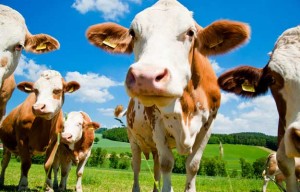You would think storms are a good source of water, right? It’s a natural part of the water cycle, the evaporated water coming back to replenish the rivers and streams. But in an urban environment, stormwater is actually a bad thing. The water in itself is not bad, but what happens when after it hits the ground and before it gets to streams is bad. The reason why: mort urban environments are covered in layers impervious to water. Impervious surfaces are things like concrete and asphalt that don’t let water soak through them. These materials may take up to 80% of the surfaces found in most cities. So why are impervious surfaces so bad? Well, water can’t go through them, so it has to run off of them. The problem with this is the water picks up contaminants from the street as it runs across. Streets are filled with trash, and chemical treatments. For example, think about how much salt and chemicals are put on the roads in the freezing winter temperatures. That salt can’t go through the pavement, it sits on top, waiting for water to come along and dissolve it. Once the water dissolves it, the water runs off of the pavement and into local streams and water ways.
There are two main problems. One reason why pervious ground is so superior is because the water can flow onto it and the earth (dirt, grass leaves, worms, etc.) will filter out the chemicals naturally as the water seeps lower and lower into the ground until it finally can replenish underground waterways and aquifers. With a limited amount of grassy surfaces in cities, there is not enough natural filter for all of the contaminated water; this is also one reason that a quick rain heavy rain can cause disastrous flooding in developed areas. The other problem is the infrastructure we have to collect the water fails as well. The grates below the sidewalks that water is supposed to flow into often get too full. Furthermore, when trash and debris from the streets get washed into them they get clogged and overflow. This makes more maintenance because they constantly have to be cleaned out. More work is also required to clean the water that flows into the system. The waste water management systems in cities spend a lot of money to clean the chemical-laden water that runs off of our buildings and streets.
Now that you have heard about the problem, I bet you are thinking, but wait, there is a simple solution! And you are correct, there is: instead of spending money on constant repairs of current infrastructure and spending money to clean very dirty water, spend that money to transition to greener, more efficient infrastructure. There needs to be more pervious surfaces. For example, the tops of buildings are pretty much useless, so why not cover them with a natural plant and earth filtering layer. Not only would the plants provide more oxygen, they would also decrease urban heat conditions in the summer and they would catch the water before it hit the streets and had nowhere to go. Not only do buildings make up a large portion of impervious surfaces, so do schools. Much new technology has come out recently in finding materials for playgrounds that are safe for children to play on and still permeable to water. Furthermore, schools could plant trees and shrubs as a natural fencing around their school yards while at the same time using the newly implemented infrastructure to teach children about the environment and waste water management. The final natural structure that city planners are looking to build is small grassy areas on the streets and sidewalks. For example there is the stormwater bump out (1), which is a curb that protrudes into the street either midblock or at an intersection and had plants planted there to soak up water runoff and stop erosion of the dirt underneath that will filter the extra water. Another street invention is the stormwater planter (2). This is slightly below ground level and is designed to catch runoff from the street and sidewalks. The planter is lined with a permeable fabric and filled with gravel and dirt. These planters are big enough to fit plants as well as small trees.
There are so many other water-saving methods including flow-through planters, rain gardens, rain barrels, pervious pavement, and stormwater tree-trenches. If you are interested you can go to http://www.phillywatersheds.org/what_were_doing/green_infrastructure/tools to learn more. (This is also where I got these pictures.)
There are no drawbacks to using natural infrastircture to prevent stream and freshwater contamination. These methods will cost money to implement of course, but they will save money, and the environment in the long run. A cleaner and greener Philly is in our future if we can help get these initiatives actually put into place.




